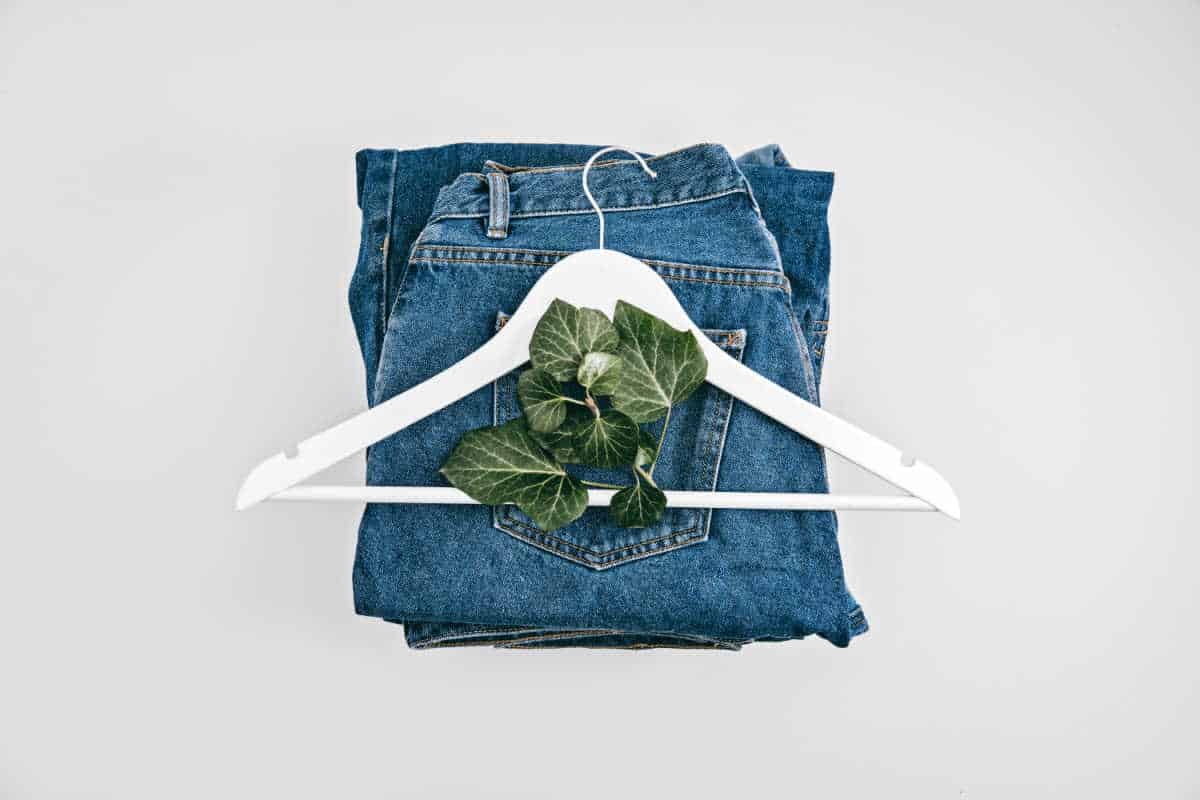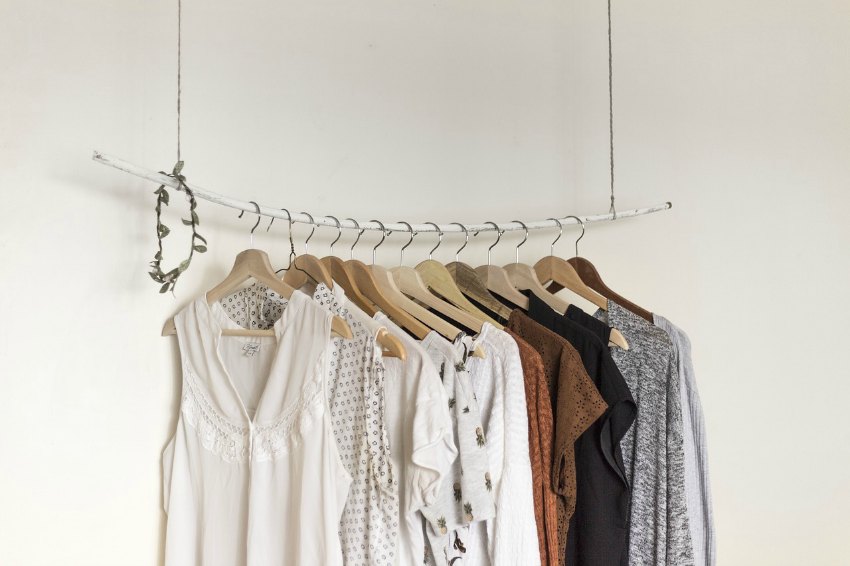How To Stop Impulsive Buying Fast Fashion (7 Easy Steps)
To support the running costs of Moral Fibres, this post contains affiliate links. This means Moral Fibres may earn a small commission, at no extra cost to readers, on items purchased through these links.
If you’re looking to kick your fast fashion habit to the kerb then one key skill you will need is to learn how to stop impulsive buying and spending. Here are my top tips to help you break this habit.
I talk a lot about building an ethical wardrobe through shopping secondhand and from ethical brands where possible. However, I feel one of the key points often left out of the ethical fashion discussion is the impulsive shopping and spending triggers.
After all, there’s no point in setting a goal to only shop ethically if you can’t recognise and remove those fast fashion impulses from your life. Otherwise, you’re setting yourself up to fail.
The truth is that it is hard to stop impulsive buying. We live in a world where we’re constantly bombarded with advertising and enticing offers, everywhere we look. From when we’re watching TV, scrolling through social media, browsing the internet, or even out and about, adverts are everywhere. It’s hard to resist consumerism when it’s everywhere.
As well as advertising, there are other triggers. There’s that thing when you walk into a shop with one thing on your list. Somehow you exit the shop having not only purchased the thing on your list but also a handful of items you didn’t plan on purchasing, but in the moment you decided you needed to buy them.
Whilst the thrill of that spontaneous purchase might feel good in the moment, impulsive buying and spending often leads to regret and unnecessary waste. That’s before we even mention the added strain on your finances.
But fear not, there are practical steps you can take to regain control over your spending habits and make more mindful choices. Let’s delve into my tried and tested strategies for helping to stop impulsive buying:
How To Stop Impulsive Buying Fast Fashion

If you’re looking to become more immune to the grasp that fast fashion has on you, then I’ve got heaps of top tips to help you out. Use the following quick links to jump to a specific section of this post, or keep scrolling for the full post:
- Have A Digital Detox
- Do A Physical Detox
- Stop Buying Glossy Fashion Magazines
- Unfollow Fast Fashion Social Media Accounts
- Identify Any Other Triggers
- Pause Before Making A Purchase
- Practice Delayed Gratification
Have A Digital Detox
it’s a Friday evening, it’s payday, the kids are in bed, and you’ve got a glass of wine in your hand. You get a suspiciously well-timed email from a shop you’ve purchased from before saying they’re having a massive sale. Before you know it you’ve got a parcel winging its way to you, even though you didn’t really need anything.
The thing is, it’s no coincidence that emails from fast-fashion retailers often arrive at these key points – such as payday or at the weekend. Marketing is big business, and marketers have spent decades studying the psychology of shoppers. They know the best times to advertise to people.
If you’re trying to stop impulsive buying then it’s best to unsubscribe from marketing emails from fast-fashion retailers to help remove temptation at the source. Just hit that unsubscribe button every time an email comes in!
I’ve created a dedicated folder in my inbox where I’ve set all the subscriptions from all my favourite small, ethical, and independent shops to be filtered into. I can then look at those emails when I want to, but they’re not in my face as soon as I open my inbox.
It’s pretty refreshing not to be constantly bombarded with “shop now” and “50% off today only” emails and removes so much temptation from my life.
Don’t Forget To Do A Physical Detox
As well as emails, lots of fast fashion retailers still send out catalogues or mail shots advertising key sales. To stop these, you can usually opt out on each retailer’s website. Failing that, I’ve got a handy post on how to stop junk mail that may be of assistance to you.
Stop Buying Glossy Fashion Magazines
Most fashion magazines are all about following the latest trends and just breed consumerism. If you want to turn your back on fast fashion and stop impulsive buying and spending, then quitting these magazines is a key step in that journey.
As an added benefit you can save hundreds of pounds. If an average magazine costs £6 and you buy 3 a month, that’s £216 a year saved straight away. And this doesn’t include the potential savings you’ll make on buying clothes that the magazines influenced you to buy.
Unfollow Fast Fashion Social Media Accounts

I have followed some fast fashion Instagram and TikTok accounts in the past, more because I liked the person rather than what they were selling. However, I noticed they started to make me feel bad about my life, because I never felt like what I had was enough. This in turn made me want to buy more stuff.
Sustainable stylist and sustainable fashion author Aja Barber puts it so eloquently when she says: “I truly think that parasocial relationships are the reason we’re in such a messy place societally and environmentally. You buy that item because you want to be like that person you admire and deep down you want to be their friend but you think it’s just because you like their style. It’s not the style, it’s the entire life. It’s the house, it’s the ease in which they seemingly move through the world. You’re buying so much more than a single dress but you don’t even realize it and you think it’s harmless but billions of people are doing the exact same and that’s why the planet is on fire.”
In a bid to avoid these fast-fashion shopping triggers, I sat down one weekend and unfollowed the accounts that triggered me to want to buy stuff. Unfollowing them took away the temptation to buy clothes because I’d seen people on social media wearing the latest trend. What was surprising was that after this purge, I felt like I enjoyed social media a whole lot more.
Identify Other Triggers
Marketing is just part of the picture. If you’re looking to stop impulsive buying from fast fashion brands then it’s also important to recognise what else in your life could be triggering you.
Common impulsive spending triggers are stress, boredom, peer pressure, or grief. You could be using shopping as a reward for something that’s gone well. Or you could be using shopping as a balm for when things haven’t gone well.
Your own triggers are unique to you. But if you can stop and look objectively at what might be triggering you to go shopping, you can develop strategies to address them directly.
Pause Before Making A Purchase
Before making a purchase, pause and ask yourself a few questions. I find that asking myself the following four questions helps to bring a bit more rationality to the situation:
- Do I really need this?
- Will this bring value to my life?
- Can I afford it without sacrificing my financial goals?
- What else does that go with in my wardrobe?
- Will I wear it, at the very very least, for thirty times?
Practice Delayed Gratification

Something that has worked well for me is the implementation of a waiting period when I feel the need to buy something. If I see something I like, I tell myself that I’ll come back to it in 7 days if I still want it. Nine times out of ten, I find that the desire for the item has completely faded by the end of the second day. It’s been a game-changer in helping me to avoid unnecessary purchases.
Create a Budget
Establishing a budget is also crucial to reigning in your fast fashion spending. Every month I allocate specific amounts for essentials like groceries and bills. I also set aside a fixed amount for clothes shopping – in my case I put £30 aside, but you can set aside whatever suits your budget. By using this technique, I find that knowing my financial limits helps me to kerb impulsive purchases and keep my finances on track.
I don’t always spend my allocated amount each month. I prefer to save up and then buy something I really need – preferably secondhand or from an ethical retailer.
The Bottom Line
Quitting fast fashion and avoiding its influence is undeniably tricky. However, by adopting a more mindful approach to consumption, you can regain control over impulsive buying habits. In turn, you can cultivate a healthier relationship with your finances and your wardrobe and help the planet.
Found this post useful? Please consider buying me a virtual coffee to help support the site’s running costs.





Thanks for the mention Wendy! The feeling is mutual :)
Great tips too. I wasn’t really into blogs and mailing lists, so it isn’t a tip that I had even thought of!
I am a big fan of magazines, but I gave up glossy fashion magazines about 7 years ago because I was sick of the advertising. (That was even before I knew about sustainable fashion) Some fantastic magazine alternatives are:
1. Peppermint Magazine from Australia, full of inspiring ethical and sustainable fashion (if not for that magazine, I may not have started my sustainable fashion journey)
2. Flow from the Netherlands (I think), it is about joyful, creative, mindful living with an appreciation for beauty in imperfection
3. Simple Living from the UK, about reconnecting with the simple pleasures of life and stepping off the treadmill of consumerism and overwork
4. Collective Hub magazine from Australia (but stocked all over the world), although this is glossy, and does contain some famous fashion faces, the magazine is actually written to inspire female entrepreneurs and changemakers. There is plenty to inspire you to dream big, and shake the world. They have numerous articles on social entrepreneurs so it is wonderful inspiration
5. Womankind magazine (from Australia), a gorgeous magazine that is completely advertising-free. It contains poetry, art, history, philosophy and everything in between.
I love magazines, and won’t give them up. But there are wonderful alternatives to the mainstream status quo.
Does anyone else have any other recommendations?
Great advice :)
I recently decided to cleanse my emails as I was getting so many emails that came in and I just deleted. So the unsubscribe button gets pressed every time something comes in that I don’t need. With specific regard to fast fashion, I do think this is really helpful and it means less emails cluttering your mind/day.
I will definitely be checking out those blogs for inspiration. In addition, I’m starting to need some maternity clothes and so scouring ebay and charity shops for 2nd hand items in a bid not to fund the fast fashion industry! (ps liked your maternity clothing blog post from a while back)
I’ve just used unroll.me on your recommendation and wow! What a game changer! Although I didn’t subscribe to look of fashion things, I did have a lot of newsletters re. homeware and it feels really good to know that I won’t be tempted anymore.
Thanks for all the great blog recommendations too, I’m on my way over to them now! S x
I love this series, and really agree with number 1. But I like magazines and instagram for inspiration, and am fine with taking it for what it is; inspiration. If I find a style I like, I will go the extra mile to find a fair alternative, so I can still look stylish, within my values.
But sales emails – go away ;)